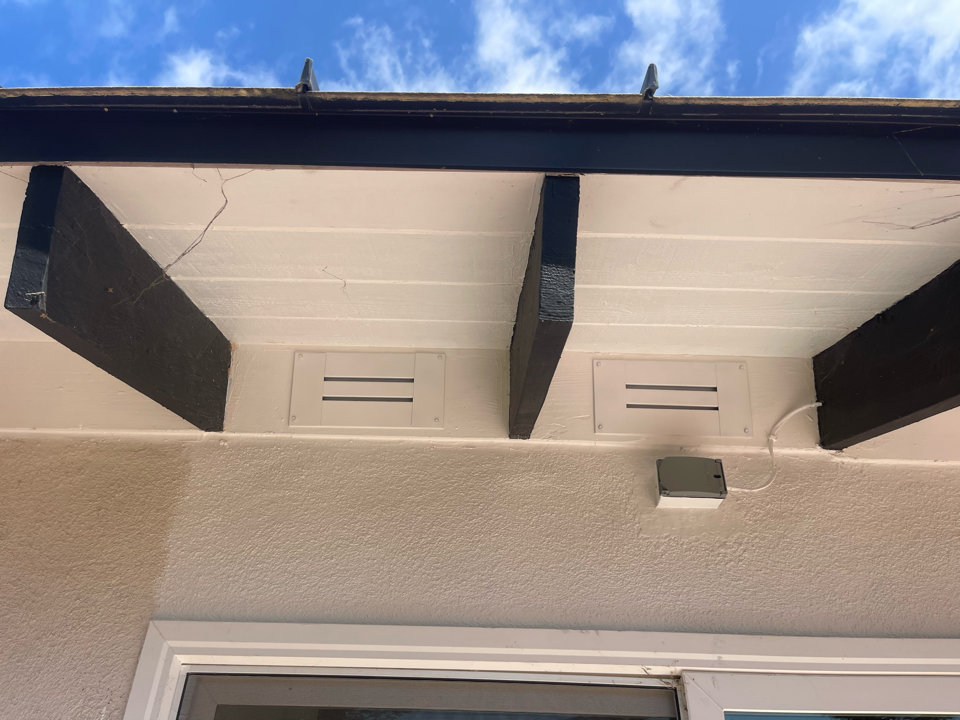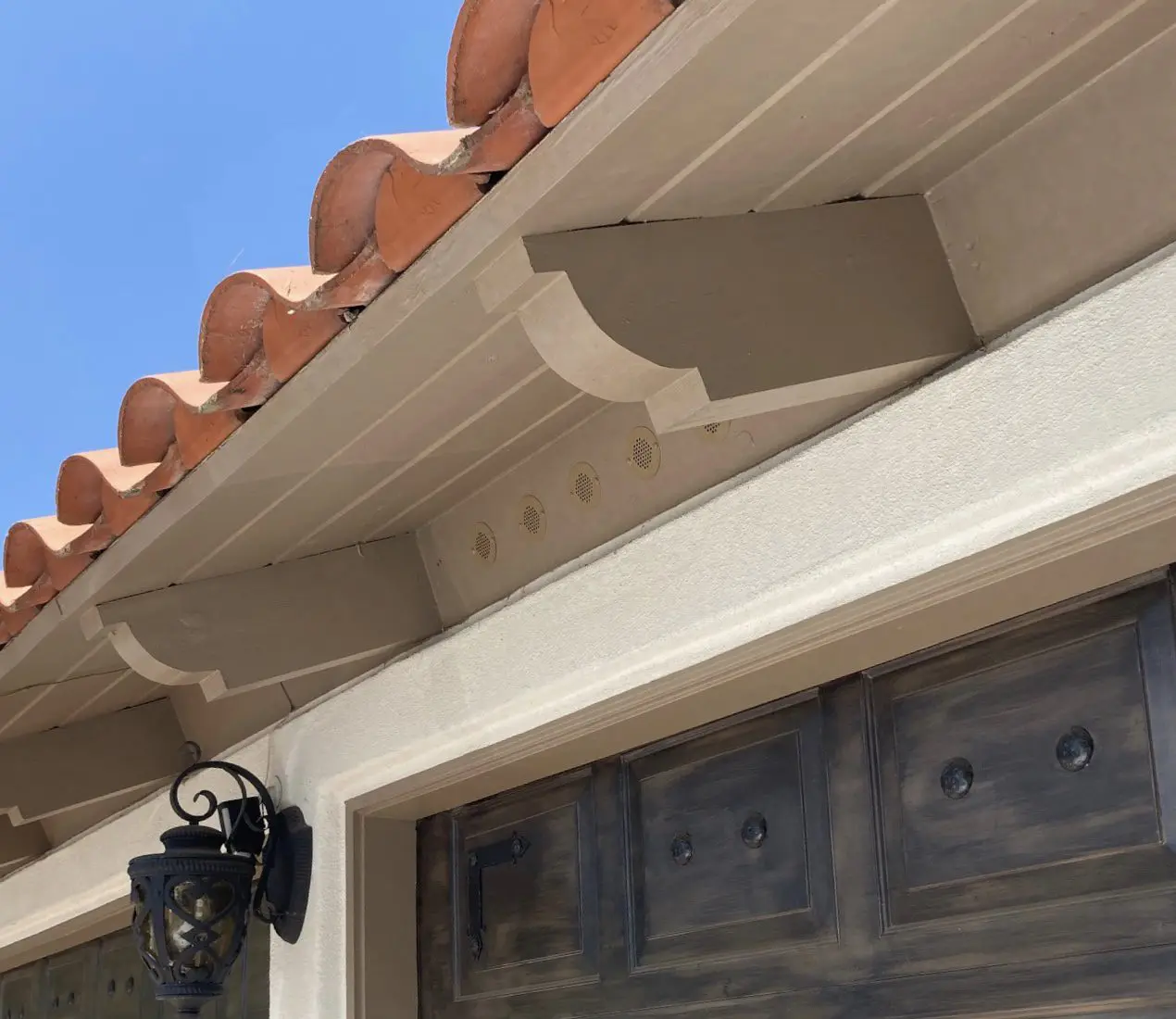Technical Specifications & Installation Resources
Under Eave/ Bird Hole Vents
Ready to incorporate BrandGuard’s Flame-Resistant Under Eave Vents into your project? From detailed installation guides to addressing common misconceptions, BrandGuard offers a full suite of free, downloadable resources to make your planning and installation process seamless.

Installation Guides
Gain Peace of Mind with BrandGuard Ember-Resistant Vents.
Designed to accommodate both retrofit projects and new construction, BrandGuard’s Ember- and Flame-Resistant Under Eave Vents offers wildfire protection across a wide range of applications.
Under Eave Vent Installation: New Construction
Designing a custom-built home or new-construction multifamily complex? Meet Chapter 7A of the California Building Code Requirements by specifying BrandGuard’s Ember-Resistant Under Eave Vents into your projects. Our vents are specified just like any other vent – but just with a triple layer of wildfire defense.



Retrofitting Under Eave Vents with BrandGuard
BrandGuard’s Under Eave/Bird Hole Vents can easily be installed into pre-existing vent holes. We offer several standard sizes to fit common dimensions, and if your project requires a non-standard vent, we also offer custom sizes and shapes to meet your design’s specific needs.
The vents are held in place with product-appropriate screw fasteners and exterior-approved clear caulking with a minimum 30-year warranty.

Step 1: Measure and Order
Measure the diameter of the existing soffit vent openings to determine the correct size. BrandGuard offers three standard sizes: 1½-inch, 2-inch, and 3-inch. Order the appropriate fire-rated continuous vents based on your measurements.

Step 2: Prep and Paint
Before installation, clean the vent faceplate with a vinegar wipe.
Apply a metal primer, followed by your choice of exterior-grade paint to the front faceplate and screws. Allow everything to dry completely in the sun.

Step 3: Install and Seal
Apply exterior-approved clear caulking (minimum 20-year warranty) behind and around the vent flange.
Insert the vent into the existing opening using a woodblock and hammer, ensuring the “T” marking on the back faces upward.
Pre-drill through the vent’s holes into the soffit wood, then fasten securely with screws.
Technical Specifications by Size
Compare vent models by size, airflow, material, and compliance ratings to find the right fit for your project.
| Size (W x L) | Model # | Flange | NFVA (Airflow) | Spec Sheets |
|---|---|---|---|---|
| 1.5” Round | FP2000 | Flange Front / Retrofit | 1 sq inch | Download Spec Sheet |
| 2” Round | FP2011 | Flange Front / Retrofit | 1.2 sq inch | Download Spec Sheet |
| 3” Round | FP2021 | Flange Front / Retrofit | 2 sq inch | Download Spec Sheet |
CAD and Revit Drawings
Looking to specify BrandGuard Vents into your next project? Access all of our Revit BIM and CAD file downloads instantly! Please complete the form below to access materials.
Certifications
Fire Plug CAL Fire Certification
Common Misconceptions
Brandguard Fire-resistant vents help stop fires from spreading in your home. They make your home safer in a wildfire by protecting it from embers and rediant heat. Understanding the differences between soffits and eaves is essential to ensuring your roofline’s look, function, and feel match your specific needs and preferences.
Eaves and soffits overlap, so many homeowners are unsure whether they need one or both types of vents. Despite their proximity to one another they have quite different forms and functions.

Soffits
Soffits/Continuous Soffits are long boards fixed to the underside of your home’s rafters, connecting the overhanging part of the roof to the side of the property.

Eaves
Eaves can be exposed, boxed-in, abbreviated, or soffited. Providing a decorative and practical function, they are the edges of the roof, which is why you can hear them referred to as “roof eaves.”
More information
Frequently Asked Questions
The essential questions, answered.
How do Brandguard Vents™ work?
Home hardening is a critical factor to improve the survivability of structures during wildfires. All homes have vulnerable “point of entry” that must be sealed to avoid hot embers and fire from entering the structure. Home ventilation is essential from an energy saving point of view, however in case of a fire nearby, there is a risk of hot embers finding their way into your attic, basement, garage, etc. BrandGuard has patented a unique system to keep embers from entering your house. Our design consists of multiple line of defense:
- A baffle design which allows air to move freely, but traps embers
- BrandGuard propriety intumescent material, which expand only if high heat and extreme flames are reaching the vents
- Non combustible, metal vents which resist heat and flames
How are Brandguard Vents™ different than standard vents?
BrandGuard Vents resists the intrusion of flame and embers into your attic through the building’s vents, thus protecting your home from dangerous flying embers created by wildfires.
Standard Vents do not offer any protection against flying embers and fire.
Why are baffles better for protection?
Baffles have long been used in commercial kitchens as a way to prevent stovetop fires. We have redesigned them to help keep flames, dangerous burning embers, and radiant heat out of your home during a wildfire. Baffles provide immediate protection during a wildfire from the very first second of exposure.
Another reason baffles are better is because they provide protection from driving rain, snow, and rodents. Our vents have passed stringent driving rain tests in Hurricane labs in Florida keep heavy driving rain out at even 140mph! Rodents are unable to chew or squeeze through our vents like they do with regular mesh vents, making them an excellent option for pest control!
What is an intumescent material?
BrandGuard Vents are equipped with a propriety material (intumescent) which expands in case of fire. The thermally activated strip expands up to 30 times its original thickness, sealing off the vent completely. This is an extreme measure to make sure that fire doesn’t penetrate the home.
Are custom vents/products available?
Yes, BrandGuard Vents will work with you and your needs to create a custom fire prevention vent for your project.
How are the vents installed?
BrandGuard Vents are installed like any traditional vent with the same footprint. Our line of retrofit fire Vents can be easily inserted over existing vents without any damage to the structure. They are held in place by applying appropriate screw fasteners. They can also be installed from inside the attic. Please see our installation instructions.
Still have questions?
Talk to our experts for no-obligation advice and support.